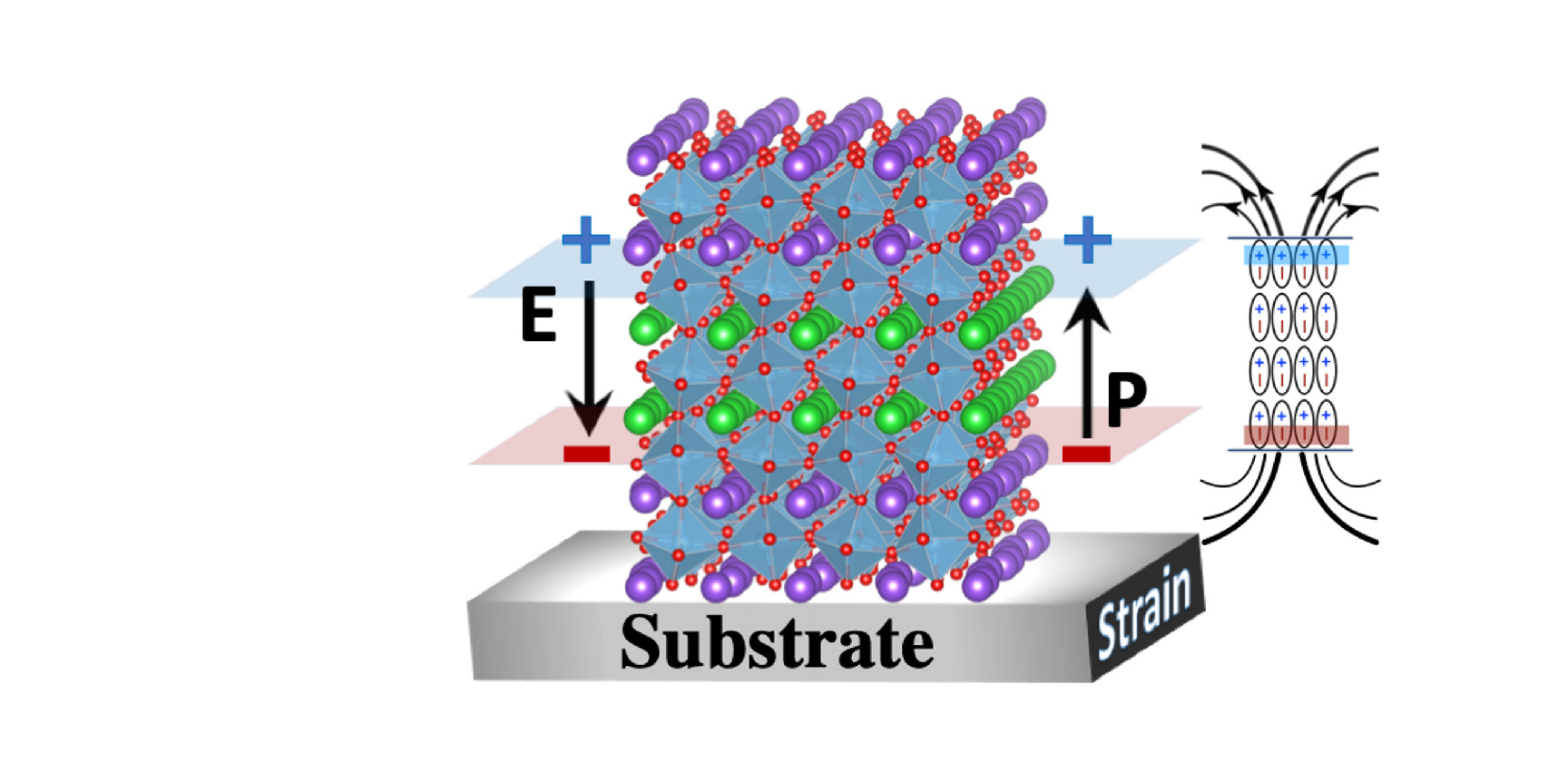Electrostatic engineering in oxide perovskites
One of the most interesting aspects of oxide perovskites is the large flexibility of their structure, enabling the synthesis of a wide variety of materials. Furthermore, the functionalities of these materials are strongly coupled with their structure. The substantial intrinsic functionalities of complex oxides can be further enhanced by growing them as thin films in superlattices or heterostructures. These geometries provide further influence on the properties through a large number of possible control parameters that can modify the inherent features or even provide access to new physics. In most cases identified to date, this is a result of the change in material’s lattice constants caused by epitaxial strain imposed by the substrate.
We exploit another aspect of the physics of thin films – the electrostatics – to engineer new structural phases. In heterostructures of polar and non-polar materials, the polar discontinuity at the interface results in an accumulation of surface charges, which in turn create an electric field, known as the depolarizing field. This depolarizing field can cause the formation of domains in the polar material or even change the orientation of the polarization from out-of-plane to in-plane, in order to reduce the energy penalty of the interfacial charge. In theory, if there exists, in the phase space of the polar material, a non-polar phase, with a relative energy lower than the electrostatic cost, the polar discontinuity could also be avoided by a phase transition to this non-polar phase, instead of splitting into polar domains or rotate the polarization in the plane of the interface. We explore this novel route to stabilizing new phases via electrostatic engineering [1, 2].

References
- Julia A. Mundy, Colin A. Heikes, Bastien F. Grosso, Dan Ferenc Segedin, Zhe Wang, Berit H. Goodge, Quintin N. Meier, Christopher T. Nelson, Bhagwati Prasad, Lena F. Kourkoutis, William D. Ratcliff, Nicola A. Spaldin, Ramamoorthy Ramesh, Darrell G. Schlom, external pageA high-energy density antiferroelectric made by interfacial electrostatic engineeringcall_made, arXiv preprint arXiv:1812.09615
- Bastien F. Grosso, Nicola A. Spaldin, external pagePrediction of low-energy phases of BiFeO3 with large unit cells and complex tilts beyond Glazer notationcall_made, Phys. Rev. Materials 5, 054403 (2021)
